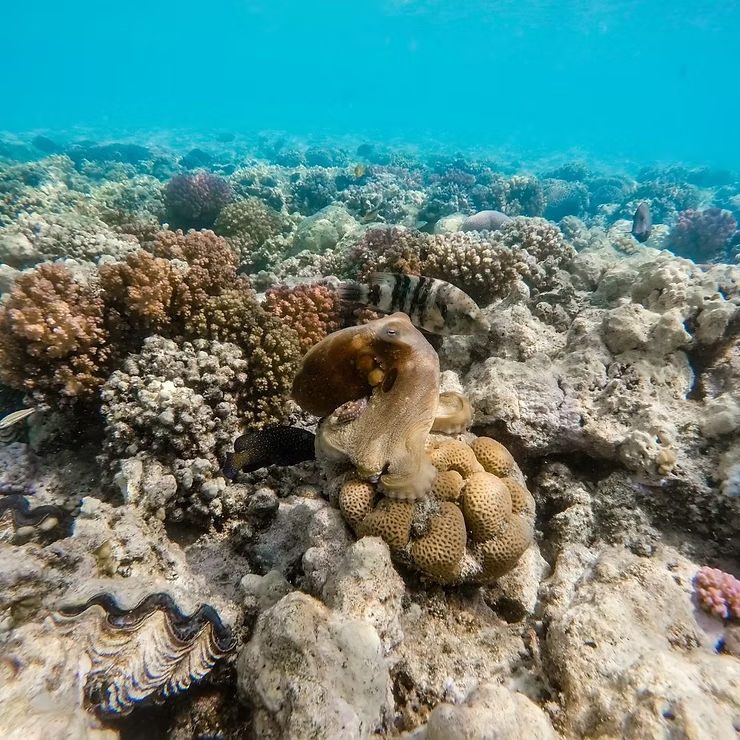Introduction
The Camouflage Chronicles: How Marine Animals Hide in Plain Sight explores the remarkable adaptations marine creatures have developed to blend seamlessly into their environments. From color-changing cuttlefish to bioluminescent lanternfish, the ocean is home to masters of disguise that rely on camouflage, mimicry, and unique biological strategies to survive. This article uncovers their fascinating world, highlights conservation challenges, and showcases the technologies helping scientists understand and protect marine biodiversity.
Key Takeaways
- Marine animals use camouflage techniques like color changing and mimicry to evade predators and capture prey.
- Deep-sea creatures rely on adaptations such as bioluminescence and pressure resistance to survive extreme conditions.
- Isolated ecosystems like the South Sandwich Islands serve as biodiversity hotspots and research hubs.
- Remote sensing, drones, and DNA metabarcoding are revolutionizing marine monitoring and conservation efforts.
- Addressing threats such as microplastic pollution and climate change is crucial for ocean health.
Masters of Disguise
The Science of Color Changing
Cuttlefish and other cephalopods use chromatophores—specialized skin cells—to alter their colors and patterns. These changes help them blend with surroundings, communicate, or ward off predators. Flatfish like flounders adapt their appearance to mimic the seabed, becoming nearly invisible in plain sight.
Mimicry as Survival
The mimic octopus takes camouflage a step further, reshaping its body to impersonate dangerous species like lionfish or sea snakes. Such mimicry protects it from predators and allows it to sneak close to unsuspecting prey. Nature’s copycats remind us that deception is a key survival tool beneath the waves.
Invisible Predators
Leopard seals and other apex predators rely on stealth and camouflage to ambush prey in icy waters. Scientists track these animals using satellite tags, uncovering their hunting strategies and migratory patterns. These insights shed light on predator-prey dynamics and help gauge the health of marine ecosystems.
Deep-Sea Enigmas
Bioluminescence: Nature’s Light Show
In the lightless depths, species like lanternfish glow with photophores to communicate, lure prey, or deter predators. Bioluminescence is both survival tool and spectacle, reminding us of the ocean’s ingenuity.
Pressure Performers
At crushing depths, creatures survive thanks to flexible proteins, antifreeze compounds, and unusual body chemistry. Some even wield glowing lures or sonar-like senses, thriving where humans could never endure.
Island Sanctuaries
South Sandwich Islands
This remote chain is a biodiversity hotspot where predators act as natural samplers, revealing prey populations and ecosystem health. High biodiversity makes the islands resilient to climate change, offering valuable lessons for conservation.
Predators as Biological Samplers
- Diet studies of seals and whales reveal prey availability and ecosystem shifts.
- Satellite tracking maps migration routes tied to food supplies.
These methods help scientists understand how climate change affects marine food webs.
Conservation and Monitoring
Protecting marine life requires more than reserves—it demands tackling pollution, safeguarding apex predators, and balancing human impacts. Advances in technology play a key role:
- Satellite imagery: Provides accurate, non-intrusive wildlife counts.
- Drones: Enable fast surveys of remote colonies with minimal disturbance.
- DNA metabarcoding: Identifies biodiversity by sequencing environmental samples.
Pollution Pressures
The Plastic Predicament
Even Antarctica shows alarming levels of microplastics, carried by currents and human activity. Marine life ingests these particles, leading to impaired health, disrupted reproduction, and ecosystem instability. Mercury and other pollutants add to the strain, threatening the balance of polar habitats.
Global Efforts
- Banning single-use plastics and promoting biodegradable alternatives.
- Organizing cleanup campaigns in remote and urban areas alike.
- Raising awareness to shift consumer behavior.
Shark Tales
Discoveries of great white shark nurseries reveal where these giants spend their vulnerable early years. Tracking migrations shows how environmental factors guide their journeys, shaping conservation strategies that protect breeding and feeding grounds.
Genetics and the Future of Research
Genetic studies reveal biodiversity hotspots, population vulnerabilities, and pollution impacts. By decoding DNA, scientists are building a clearer picture of ocean ecosystems and guiding conservation priorities. From microbes to whales, genetics underscores the interdependence of marine life.
Conclusion
The ocean’s camouflage artists—from octopuses and sharks to lanternfish and leopard seals—showcase nature’s creativity and resilience. Yet their survival depends on global conservation, innovation, and responsibility. With advanced research and collective action, we can protect these hidden wonders and ensure the seas remain a thriving, balanced ecosystem.
Frequently Asked Questions
How has technology transformed the study of marine animals?
Underwater cameras, submersibles, drones, and satellites provide continuous data, allowing close study of marine life in natural habitats.
What can we learn from copepods and whales?
They share survival strategies in polar regions, revealing how ecosystem shifts affect species from plankton to giants.
Why are the South Sandwich Islands important?
They are biodiversity hotspots where predators act as biological samplers, uncovering prey dynamics and ecosystem resilience.
What role does DNA metabarcoding play in marine research?
It enables rapid biodiversity assessments, monitoring ecosystem health, tracking invasive species, and studying food webs.

